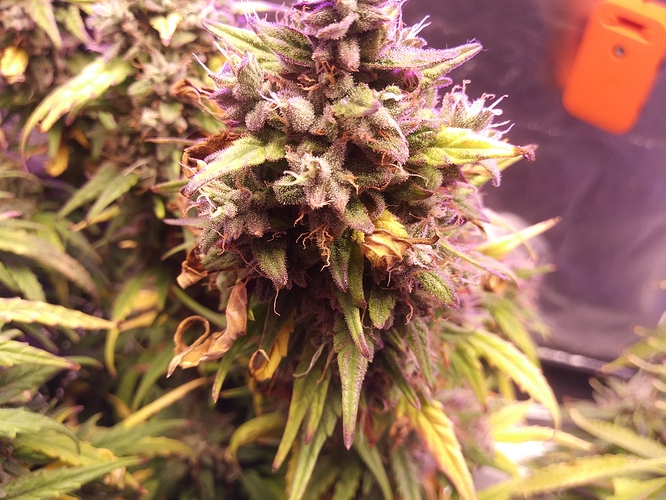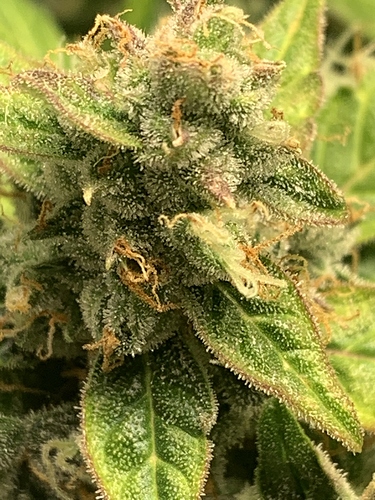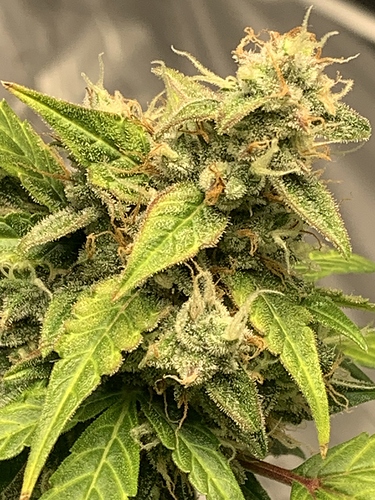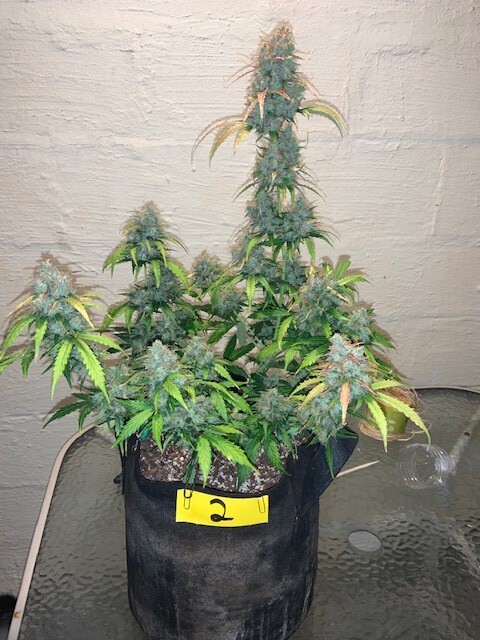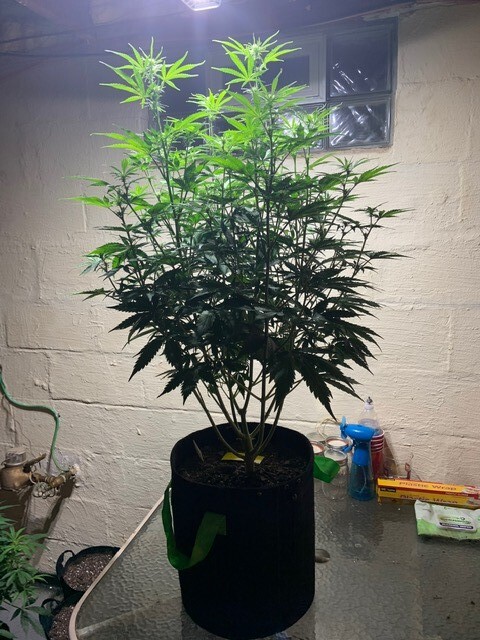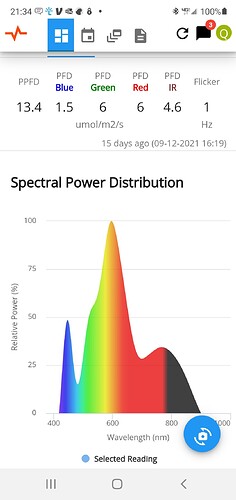I’m still fairly new at this (~1 year). I’ve persevered after a rough start due to too much information not tempered by experience. I think I’m starting to kill it but now I’m on a quest of continuous improvement. I’ve had my Pulse Pro for a couple weeks. It’s fun looking at all the new information this device gives me. I’m happy my ambient CO2 is always between 650 and a thousand but now I’m getting off on a tangent. More information about my lighting intensity and spectrum has informed me that I know very little about how to tune my lights for the stages of my plant’s growth. I veg my plants under an HLG 100v2. My flower tent is a 2.5 x 5 with a Budget LED Series 3+ R-Spec 250W with an added Optic LED Slim dimmable 100 watt Bloom Enhancer with UV/IR set up as a side light. I have no idea what to set the intensity of these lights to other than to start around 50% and crank them up periodically until arriving at full intensity and only backing off if the plants get angry with me. I did find out I can’t get that bloom enhancer too close to the plants. Please help me improve my grow. Thanks.
DOH, u already have the Pro,
400-600 PPFD veg
600-800 late veg-early flower
600-1200 flower, late flower.
using CO2 i use the higher values.
REALLY GOOD ARTICLE explains what u want.
Yes, I got it on Feb. 11th. I saw the pre-order special and jumped on it. It was lucky timing. I had convinced myself to buy the Pulse One. I saw the pre-order special for the Pro when I went to the website. Between that and the veteran’s discount I ordered immediately. Thanks for the guidance. I appreciate the help. I hope you get your Pro soon.
Do you have some pictures of the Grow? I found that getting the most blue into my spectrum and hotter temps in veg keep my plants short and bushy. I also have hlg light but instead of buying two separate 800$ lights (bspec & rspec) I bought the 650r and bought 4 separate Bspec boards which were or are on sale for 49 bucks each and I alternate the boards. You definitely don’t “need” a different spectrum but I would recommend it knowing what I know now. I’m gonna give you the best advice I EVER got from a older grower( I’m not much more of a expert then you are) STOP listening to ppl online. His words exactly were: “ there is 3 types of growers on the internet. Beginners, beginners whom think they are good growers, and good growers. The problem with this is there is significantly more “beginners whom think they’re good growers” then there are truly good growers. So with that comes a plethora of misinformation passed along by people who don’t know wtf they are talking about.”
In absolute honesty, when I applied those words to my garden it exponentially got greater over a short period of time. I wasn’t fighting “lockouts” or chasing “deficiency” any longer. Now my problems became shit like my plants are getting too big, the trimmer keeps getting jammed bc the material is too sticky. When I read your post it gave me a flash back of all my trials and tribulations, and struggles bc I didn’t just rely on myself and my own ability and started seeking out info that 90% of the time turned out to be shit. I’m sorry for the rant lol it sounds like you’re doing a hell of a job so just strap in and enjoy the ride. There is never a shortcut to this if you know what I mean.
I wish you luck my friend happy growing!
I’ll post some pics later. I’m in the middle of my dark period. I’ll open myself for critique. I’ll welcome it as a matter of fact.
Thanks tommy.tee for the advice and words of encouragement. Here are some pictures as promised.
This is my 2x2 veg tent. It has a couple 40 day old Blueberry Autos from ILGM. The media is reused FF Coco Loco with Dr. Earth dry amendments. I amend my media every 3 weeks. I water with compost tea in between amendments if the plants look like they can handle it or maybe even want it. There is a Pulse One in this tent but it’s around the corner.
This is my 2.5 x 5 flower tent. The plant on the left is a Jack Herer auto from ILGM and the plant on the right is an auto Berry from MSNL. Both are days away from harvesting but the trichomes won’t turn amber. They are 89 days old.
Jack Herer auto
Berry
I guess I’ll hit reply now and see if I composed this response correctly and somewhat coherently. If anybody wants to criticize, offer advice or call me stupid feel free. You’ll either help me or motivate me to do better. Thanks.
I had some WWA that did me the same thing being stubborn and not turning amber too I waited and waited ans so on, so right at 120 days I finely saw some amber not much but they were there and the fan leave were all yellow almost brown. That’s when i decided to harvest them now there were some buds that was dry but after 120 day I would too…  so I hope this gives you some insurance to not give in and wait it out and watch them carefully…I’m telling they can be a little sneaky…
so I hope this gives you some insurance to not give in and wait it out and watch them carefully…I’m telling they can be a little sneaky…
 I know its not much but hay that was my first auto grow so I’m OK with that it just made me think more and learn, my current grow of the same stain WWA, I did a lot of changing and I mean a lot so here are some of them now at 8 wks from seed
I know its not much but hay that was my first auto grow so I’m OK with that it just made me think more and learn, my current grow of the same stain WWA, I did a lot of changing and I mean a lot so here are some of them now at 8 wks from seed![7 wks 5 days 16|375x500]
Very well kept! I can appreciate a clean well tended grow environment!!! Thank you for sharing. I love the fall colors
Hey that is truly awesome advice, and I could tell it came from your heart.
I hope a lot of people read it.
Thanks again 
I am also new to all of this, but I love working with the Pulse Pro.
I really haven’t had a chance to read up on the spectrum reading for the PPFD.
I’m attaching 2 screen shots of 2 reading, one I took on purpose and one was accidentally. Can’t remember which is which, anyway I’m not sure if either of these reading were done right, and what they are telling me. Any help would be greatly appreciated.
Thanks 
PAR vs PPFD
PAR - photosynthetically active radiation - light comes in colors, not all colors are used by plants for photosynthesis. The colors that can be used by plants for photosynthesis are considered to be in the “PAR” spectrum. That’s why showing in the graphs that you’ve posted.
Photosynetic Photon Flux Density - how many photons (light particles) of photosynthetically usable light (“PAR”) are hitting a given area, measured over time.
PAR
Head over to YouTube and check out some of the videos by Dr. Bruce Bugbee. He’s the most prominent voice in the area of cannabis lighting research. There are also many articles scattered across the web but Bugbee stands out. In addition to being a professor at U of Utah, engaged in cannabis research, he’s been working for NASA for years and years to advise them on horticulture and he’s the founder of Apogee Instruments, a manufacturer of light measuring instruments.
In a nutshell…
We’ve moved from CMH, HID, and blurple lights. The filament lights generated light within on fairly narrow band and blurple LED’s generated blue light and red light. A few years ago, LED lighting manufacturers could produce a “full spectrum” or “sunlight” spectrum LED at a reasonable price so blurples are now pretty much only at the very low end and filament lights are nearing EOL as a product because of long term cost - they require more electricity than an LED to generate light, they’re limited in the width of their spectrum, and they throw off a lot of heat which requires a lot of ventilation to disperse. Filament lights aren’t gone, certainly, but the writing is on the wall.
OK, different color light - one of the Bugbee videos lays it out very clearly so, please, take the time to sit through at least one of them.
Blue light - helps “shape” a plant. It influences plant to stay short, bushy, and to have short space between the nodes (“internodal space”), which allows cannabis to produce dense buds.
Red light (red and “far red”) - makes plants grow tall and makes them flower.
Green light - if you listen closely to Bugbee, he covers the physiological advantage of green light very briefly. The main advantage of green is that, by adding green light, we’re back to a spectrum that allows humans to see plants clearly and that makes it easier for growers to check plant health. Blue and red have impact on photosynthesis but the impact of green on photosynthesis is not widely discussed.
Filament lights fell into the “veg” category (heavy blue) or “flower” (red heavy). Most LED lights today are “full spectrum” which includes blue, red, and green - why no “blue” LED’s or LED’s that are primarily red? Well, you can buy them but, since they’re specialized lights, they’re not as common as a full spectrum light.
The spectrum that you’ve shared is a full spectrum light
Blue - 11%
Green-39%
Red-40%
IR-11%
I own two lights, a Mars SP3000 and a Growcraft X3. The PAR charts are here and here.
The Mars is a full spectrum light and is a mid-priced product. It includes a fair amount of blue which keeps plants short and compact but blue light also decreases yield. Growcraft sells a more expensive product and they offer both a “veg” light (blue heavy) and a “full cycle” light which is red heavy. The X3 is a “full spectrum” light but has much less blue
Full disclosure - I’m a strong believer in his research and spent the $$ to purchase an MQ-500 along with the wand and case. That is the most expensive single piece of equipment that I own (the Growcraft X3 is close behind). I tested Corona/Photone fairly extensively and, after some very helpful conversations with the programmer there, opted for the Apogee. Earlier today, I was able to set the PPFD for my seedlings at 105 µm. With the Apogee, I know that it’s ±1%
PPFD
PAR is what colors of light does the grow light generate. PPFD is how many photons from the light are hitting a surface. It’s typically measured in nano moles per square meter per second.
Again, Google is your friend

but I’ve attached a guide commonly used for cannabis. Both Pulse models read PPFD - that’s just the number of photons hitting an area. That tells us how many photons are landing but it doesn’t tell us how much light is hitting our plants over the course of a day. That’s called the “daily light integral” and that can be calculated or you can use a chart. I’ve attached a chart for easy reference.
Cannabis will make use of large amounts of light (again, refer to Bugbee) but the law of diminishing returns kicks in at about 700 µm for a few very valid reasons. One issue is that, IIRC, Bugbee says that you need to add CO2 to take advantage of the PPFD over that level (it could be 1k µm but I’m not using CO2 so I didn’t retain the value). Second, the cost of electricity may make it cost-ineffective to go over that level. Also, the rest of the grow environment has to in good order, as well - you won’t get good results if you push PPFD but your nutrient levels are too low, for example.
Long posting and I haven’t edited it much. Apologies if it wanders a bit - PPFD and PAR are huge topics - so apologies in advance but the info here should help point you in the right direction.
Hey thanks for the reply, and all the information. Now I have to find the time to sit down and really study it so I can get the most from it.
I using Bestva 1000w LED full Spectrum Quantum lights, that’s a mouth full. Lol
So I guess the the numbers are OK, I just need to learn how to use that information to tweak the lights to the different stages of the grow.
Thanks again
Iceman 
You’re welcome.
Grab a copy of this document. It’s by LICOR which is a competitor to Apogee and it’s an excellent summary.
I read that document that you suggested, and it was very informative. Now I have to unscramble my brain, lol and come up with a plan for my lights for our next grow.
Thanks for the information 





